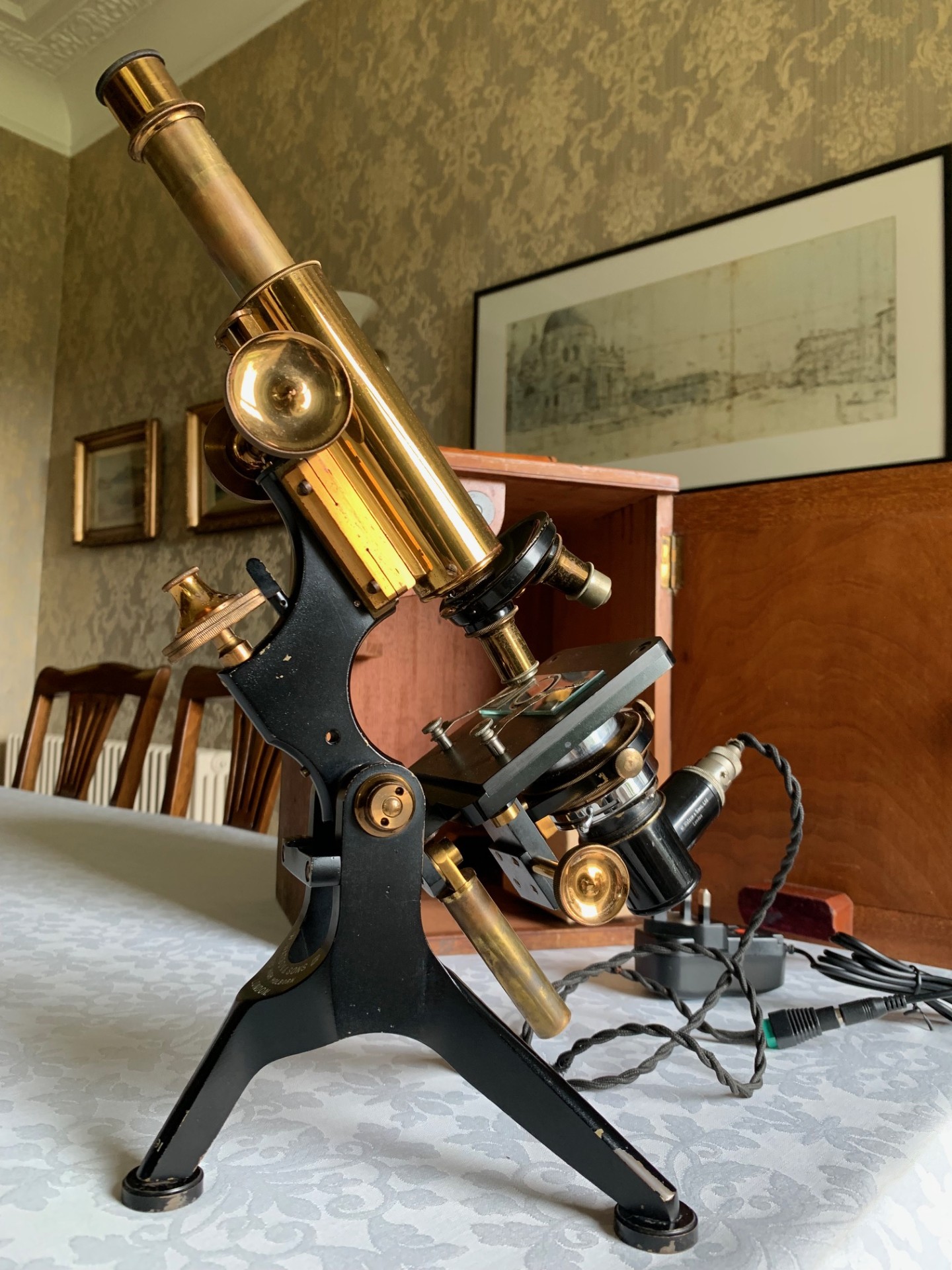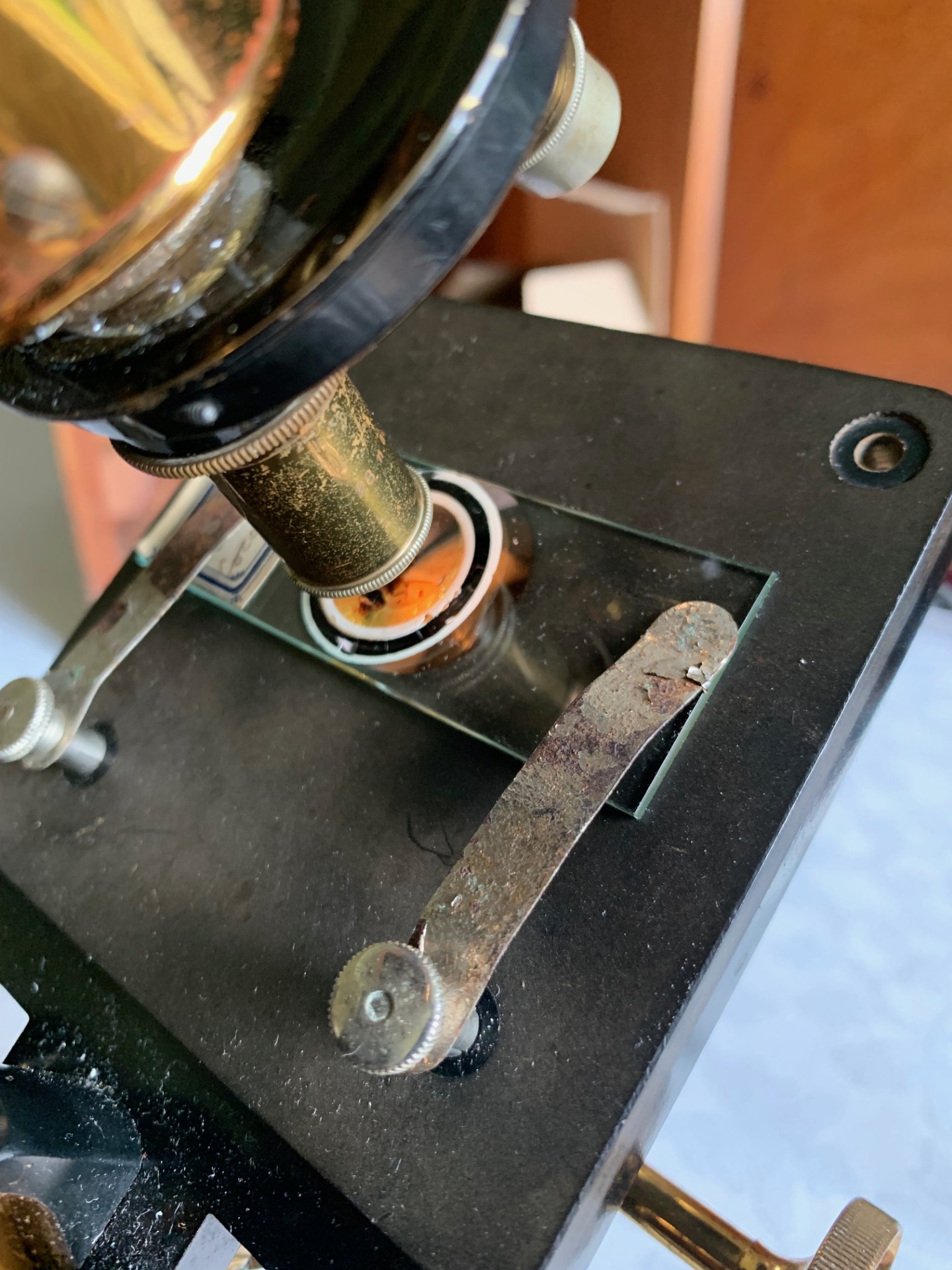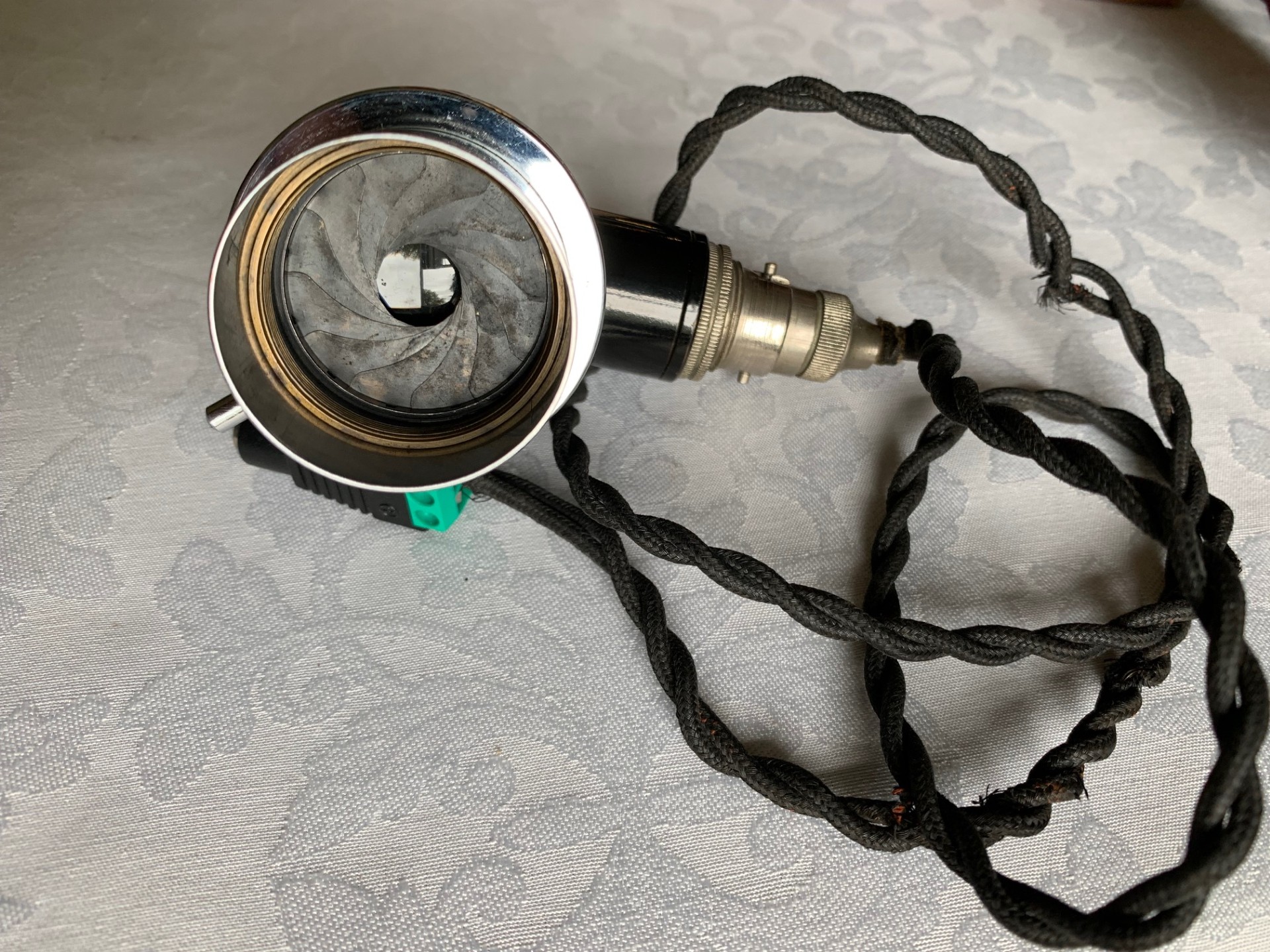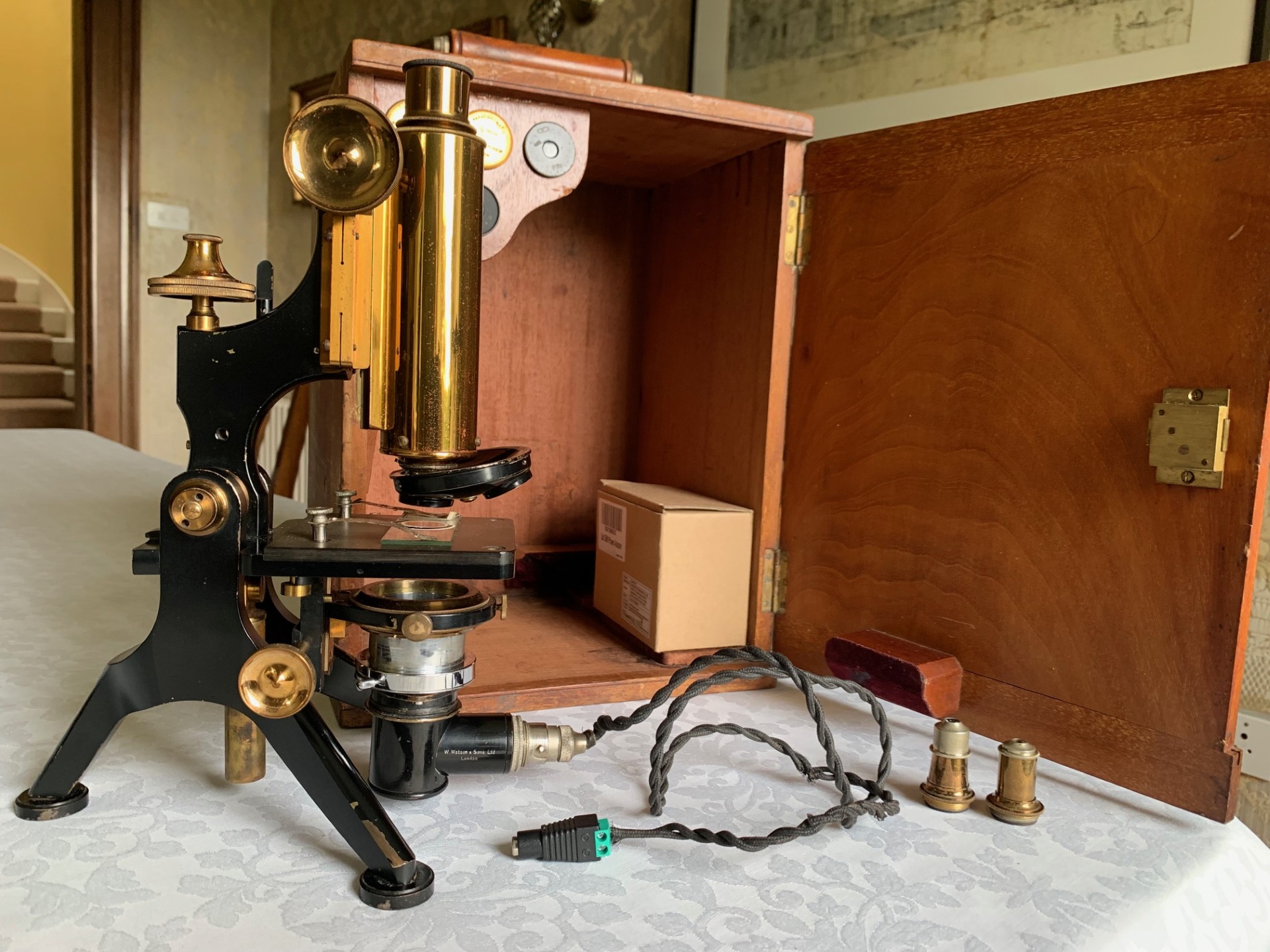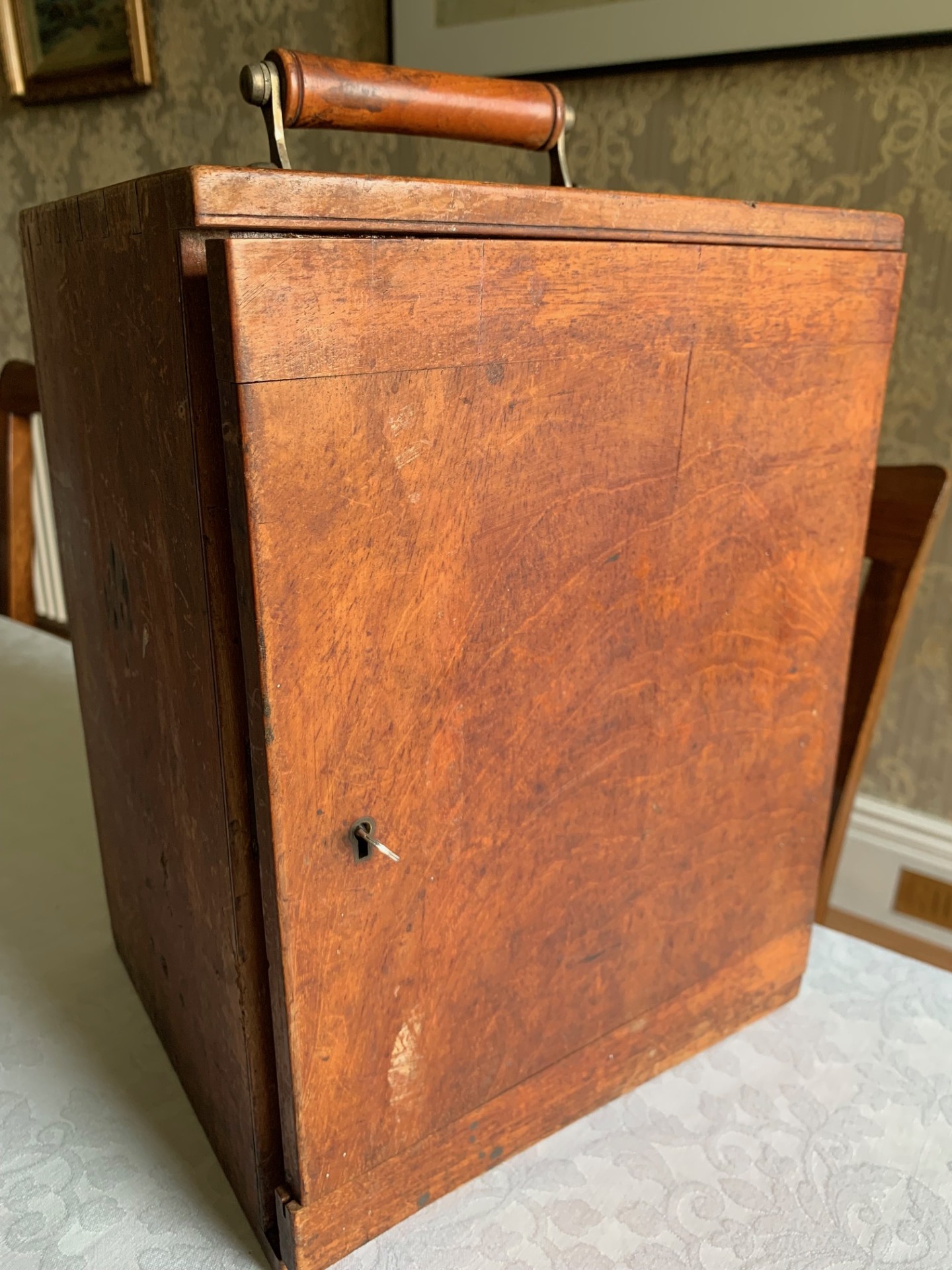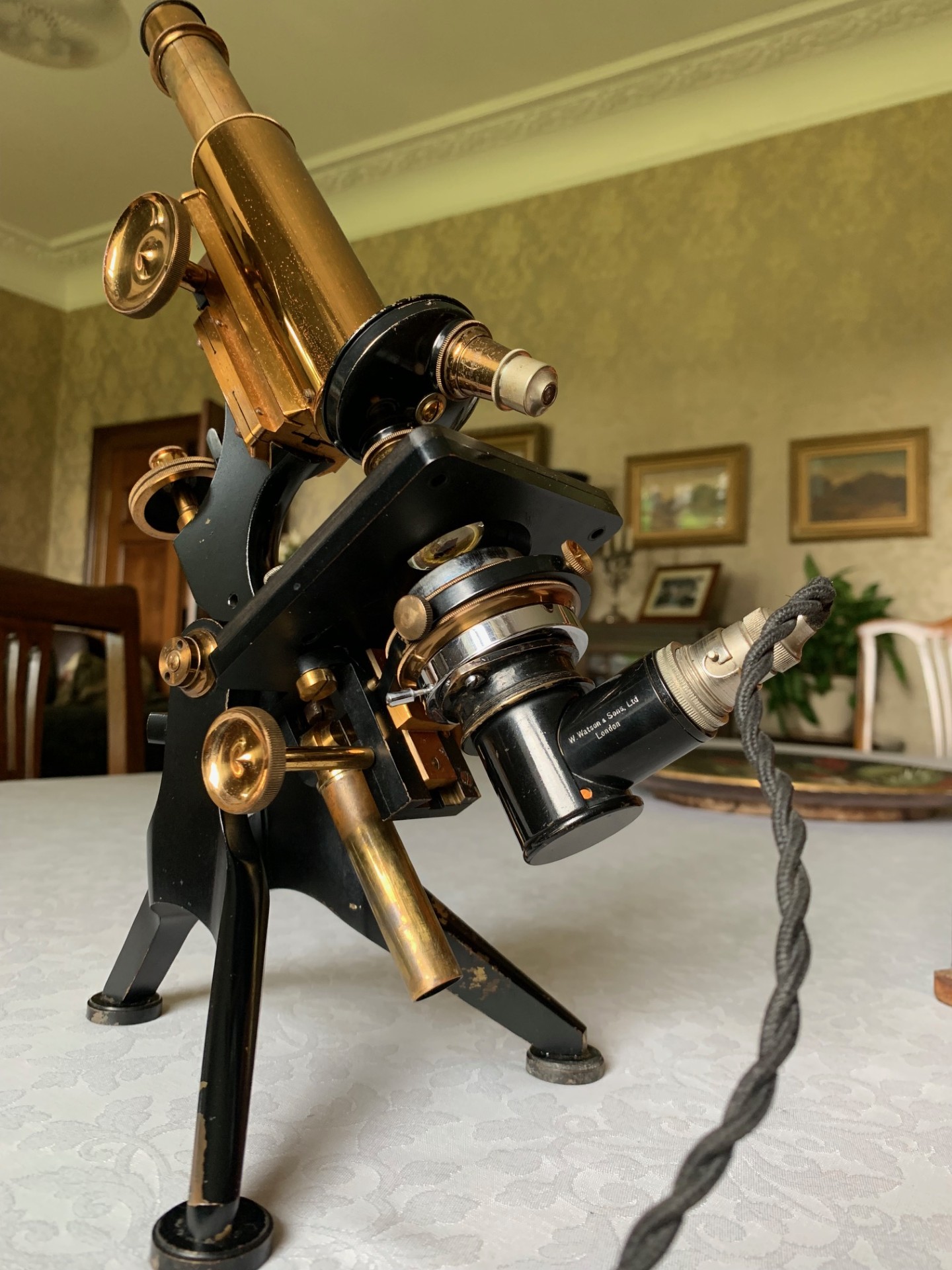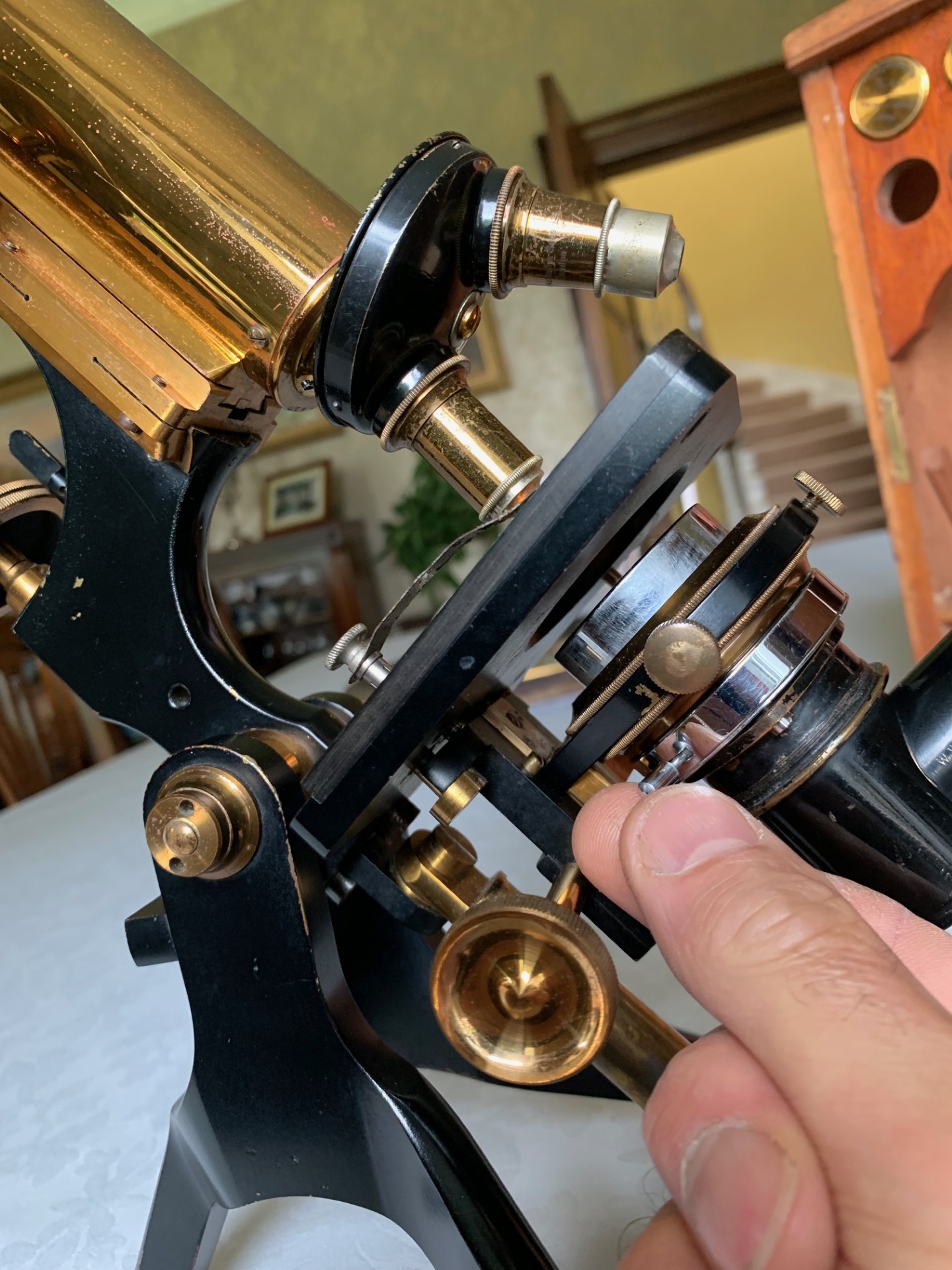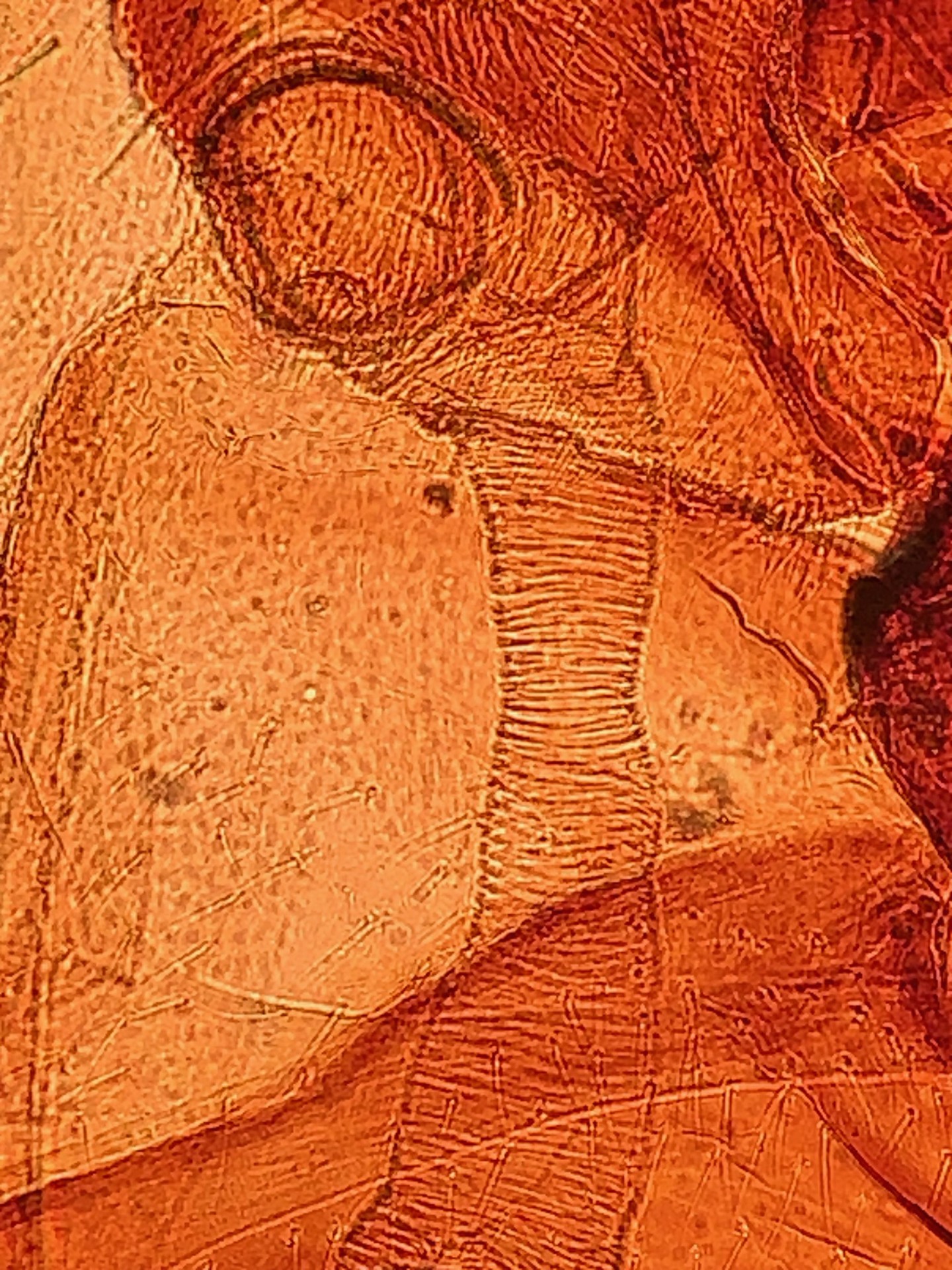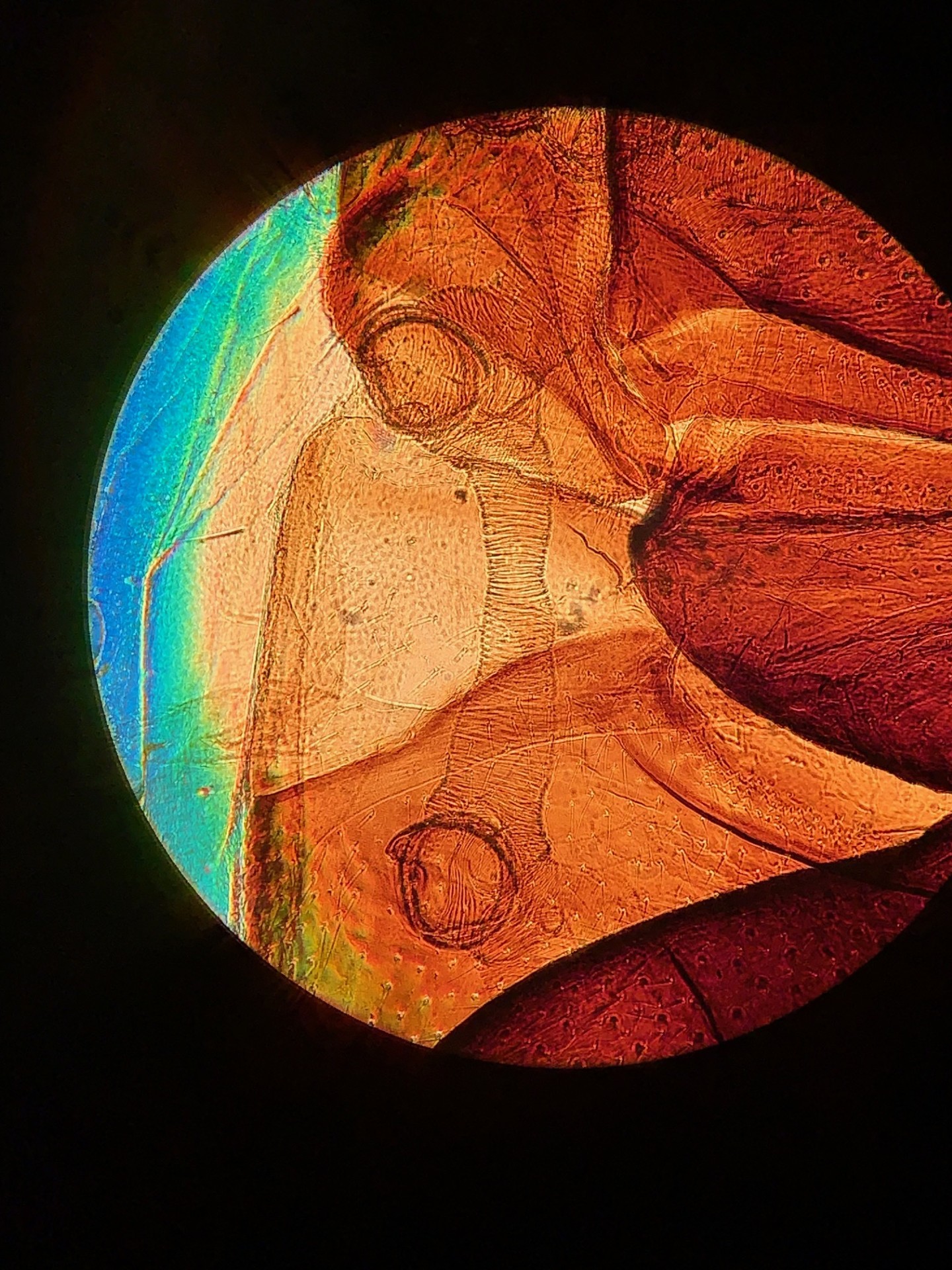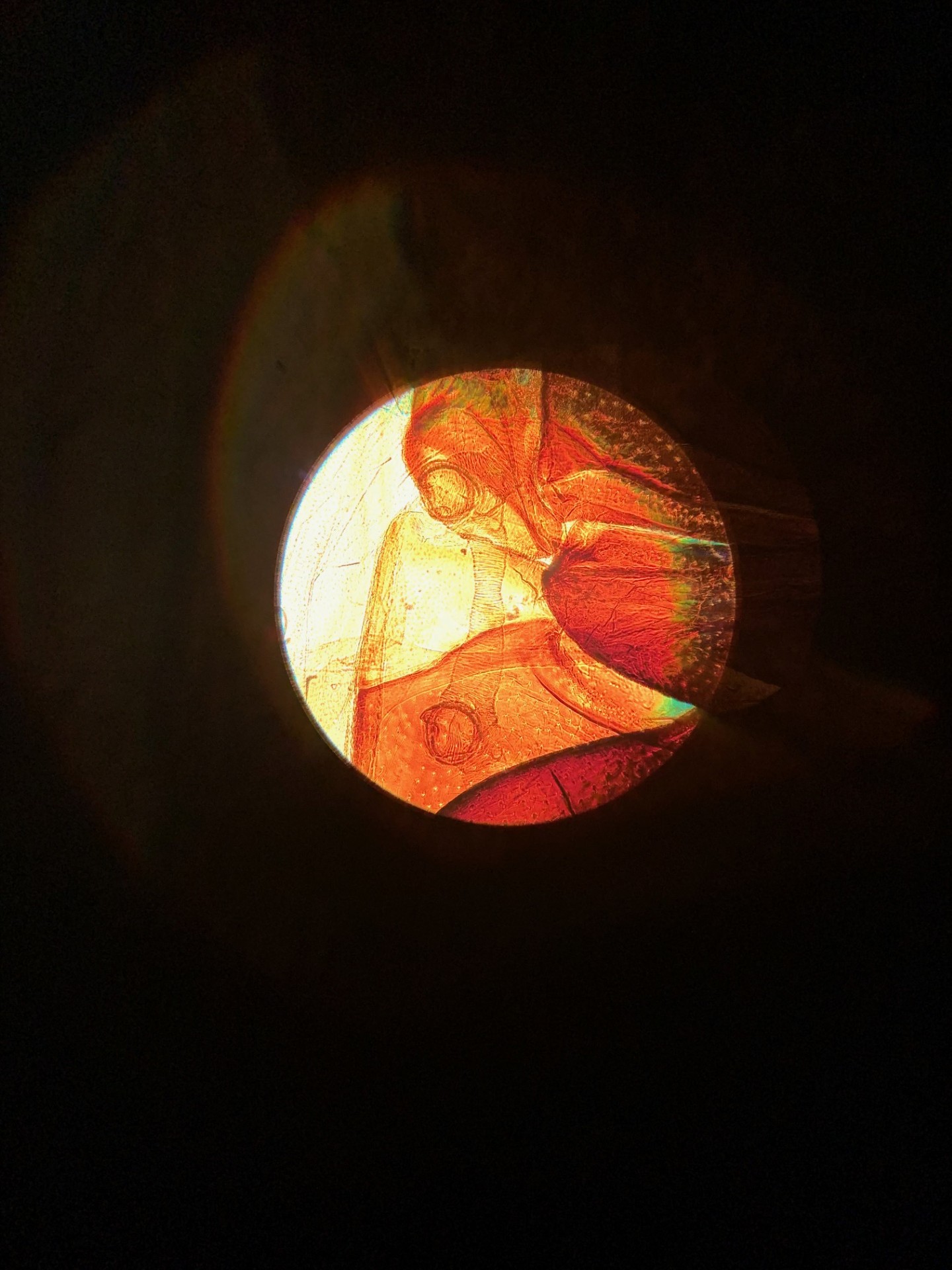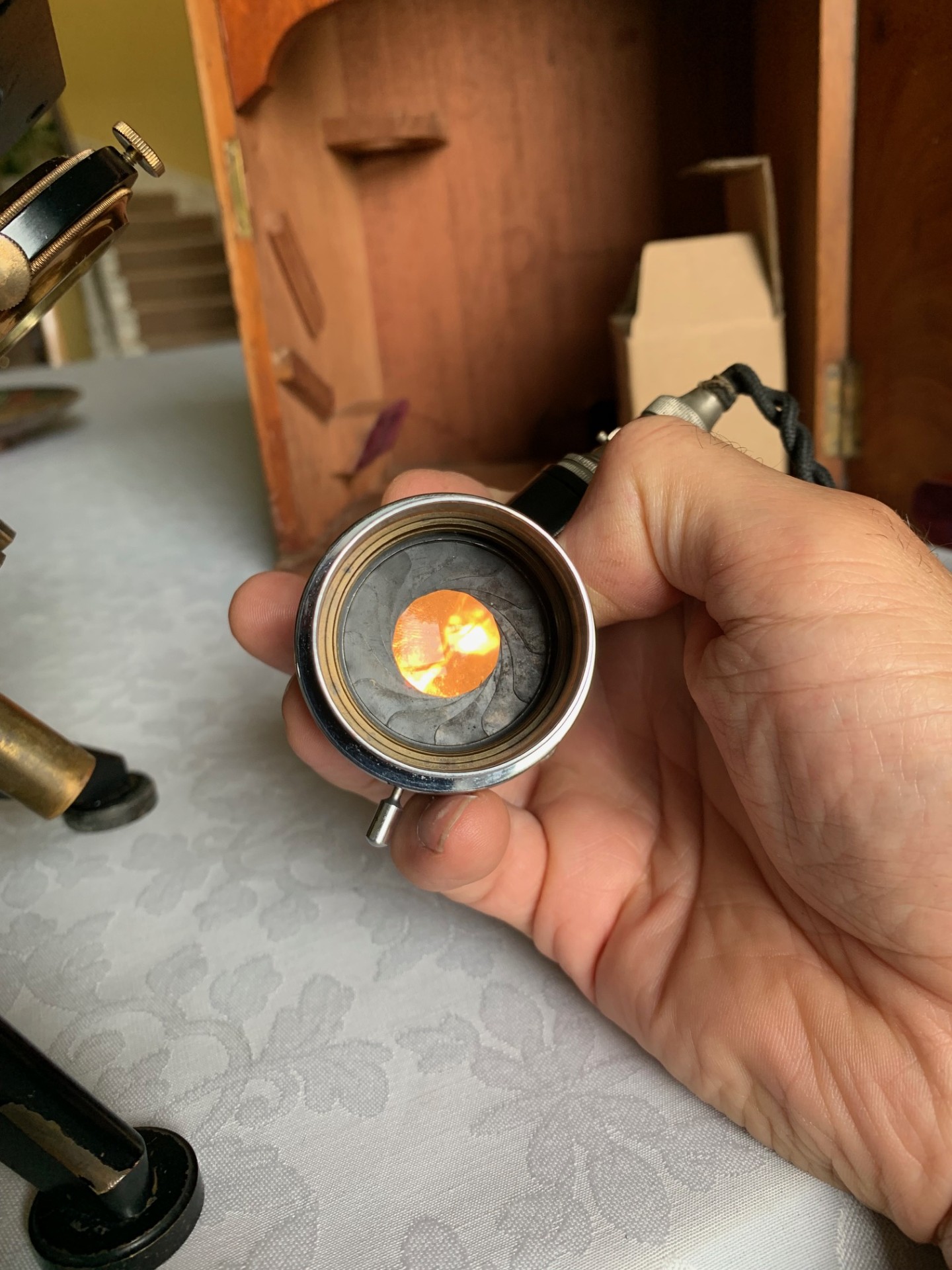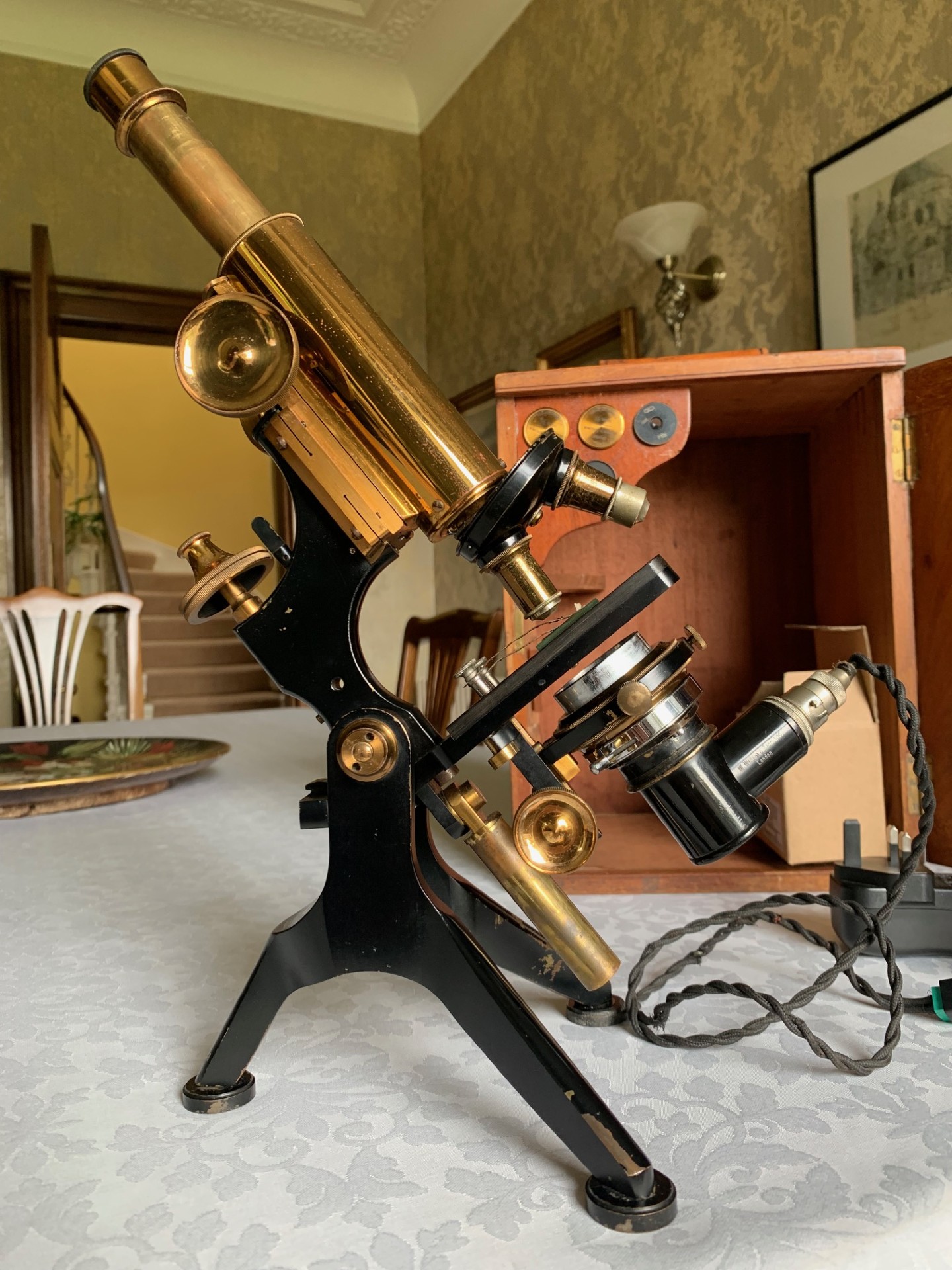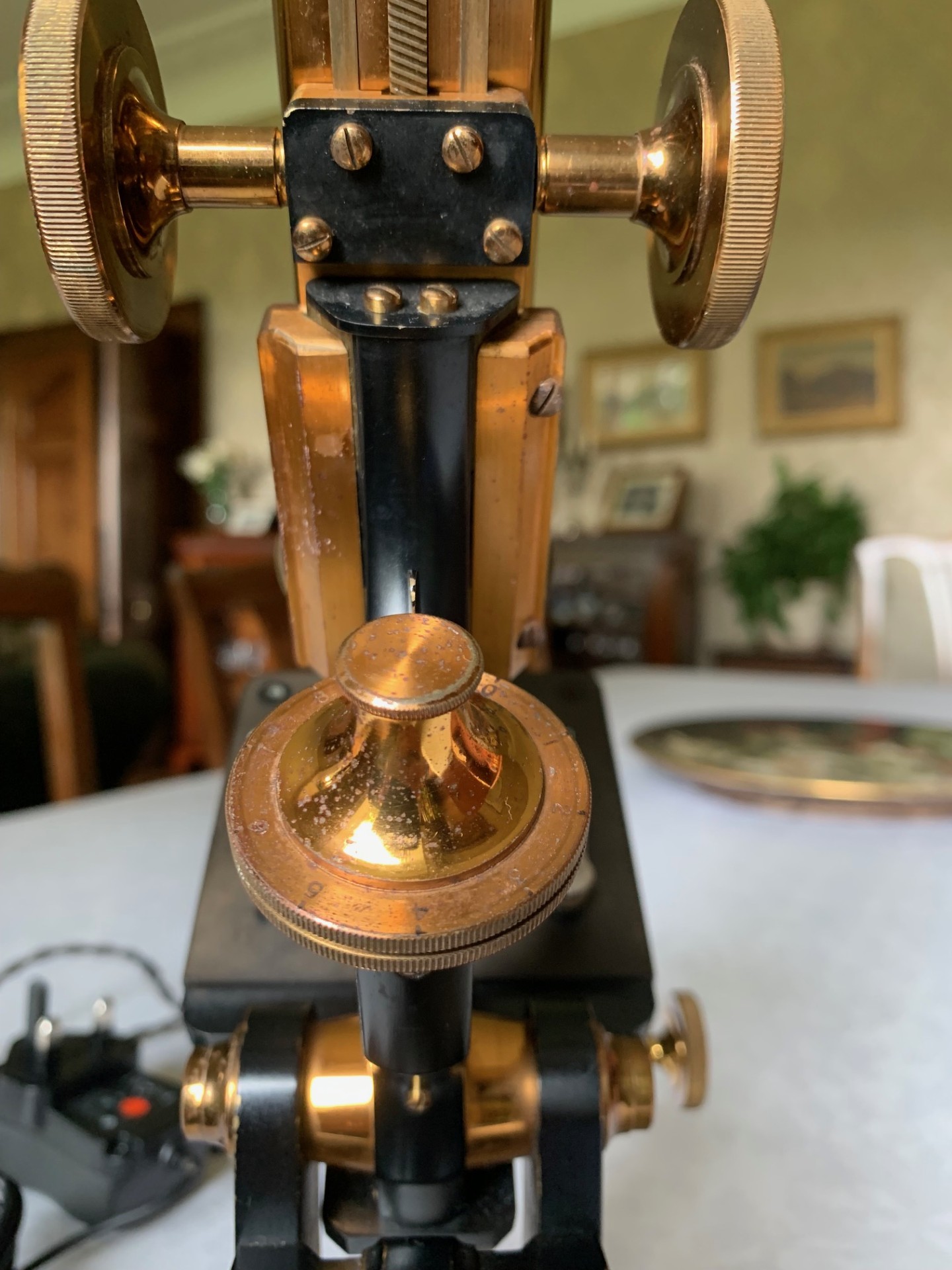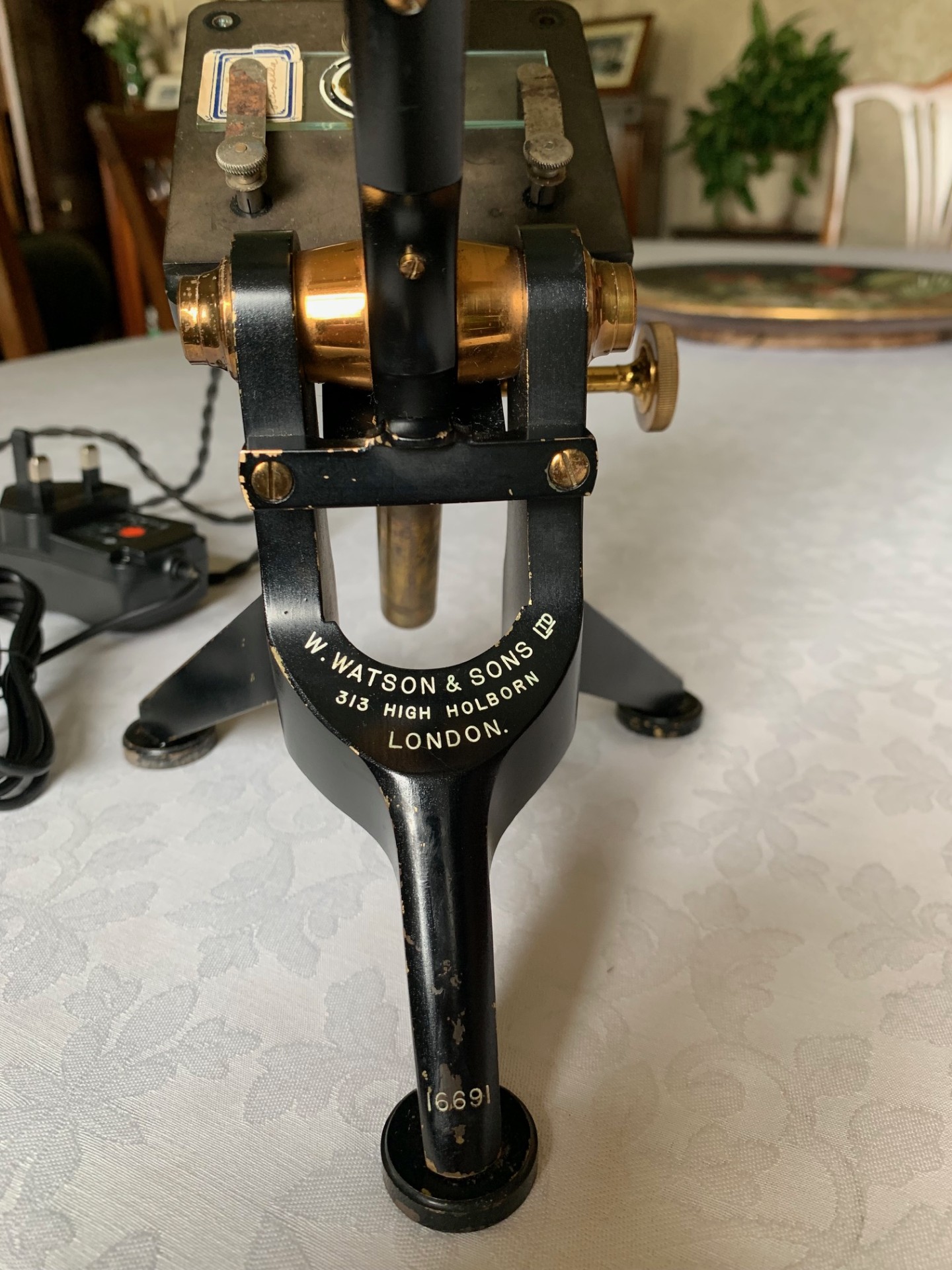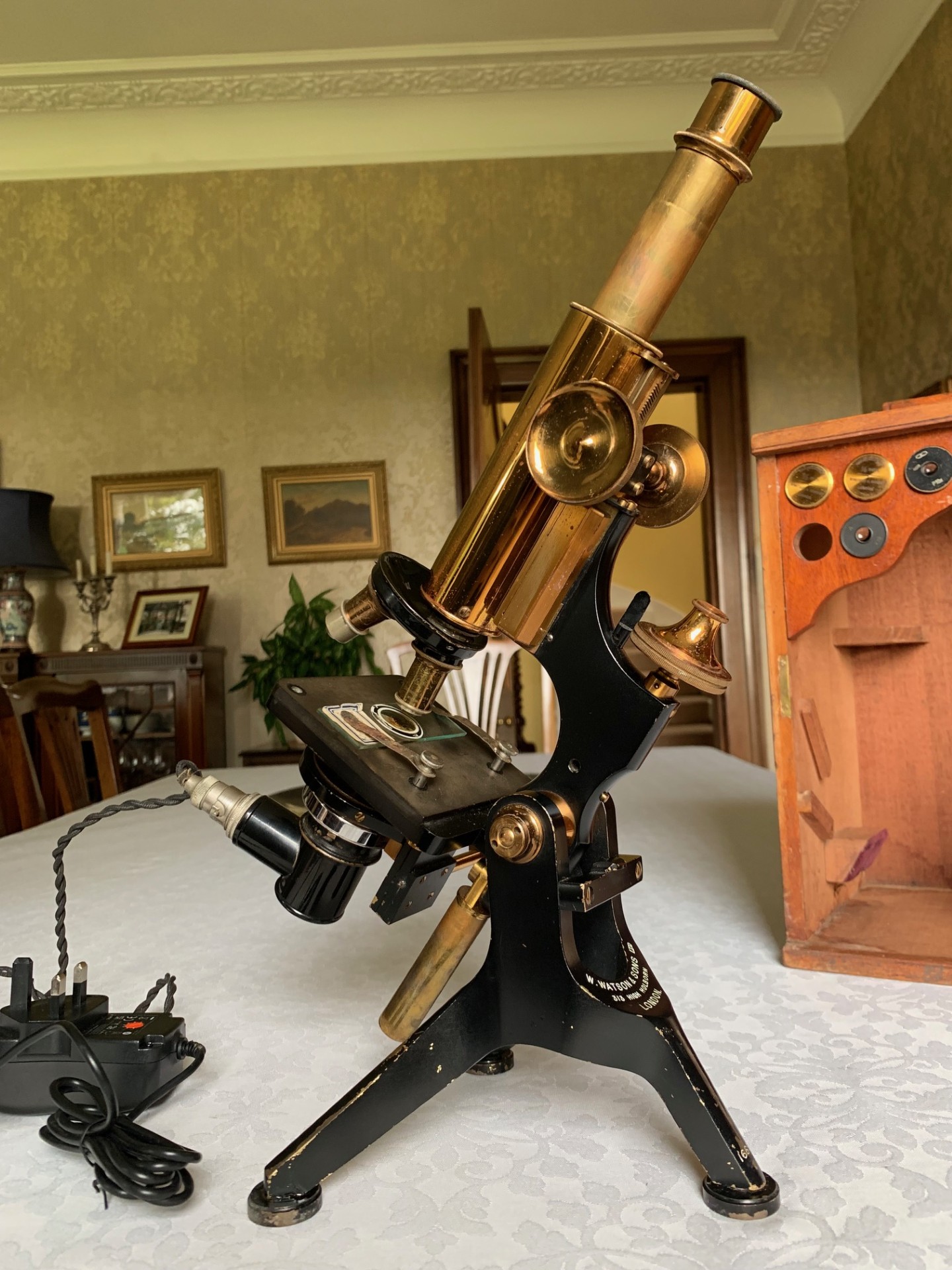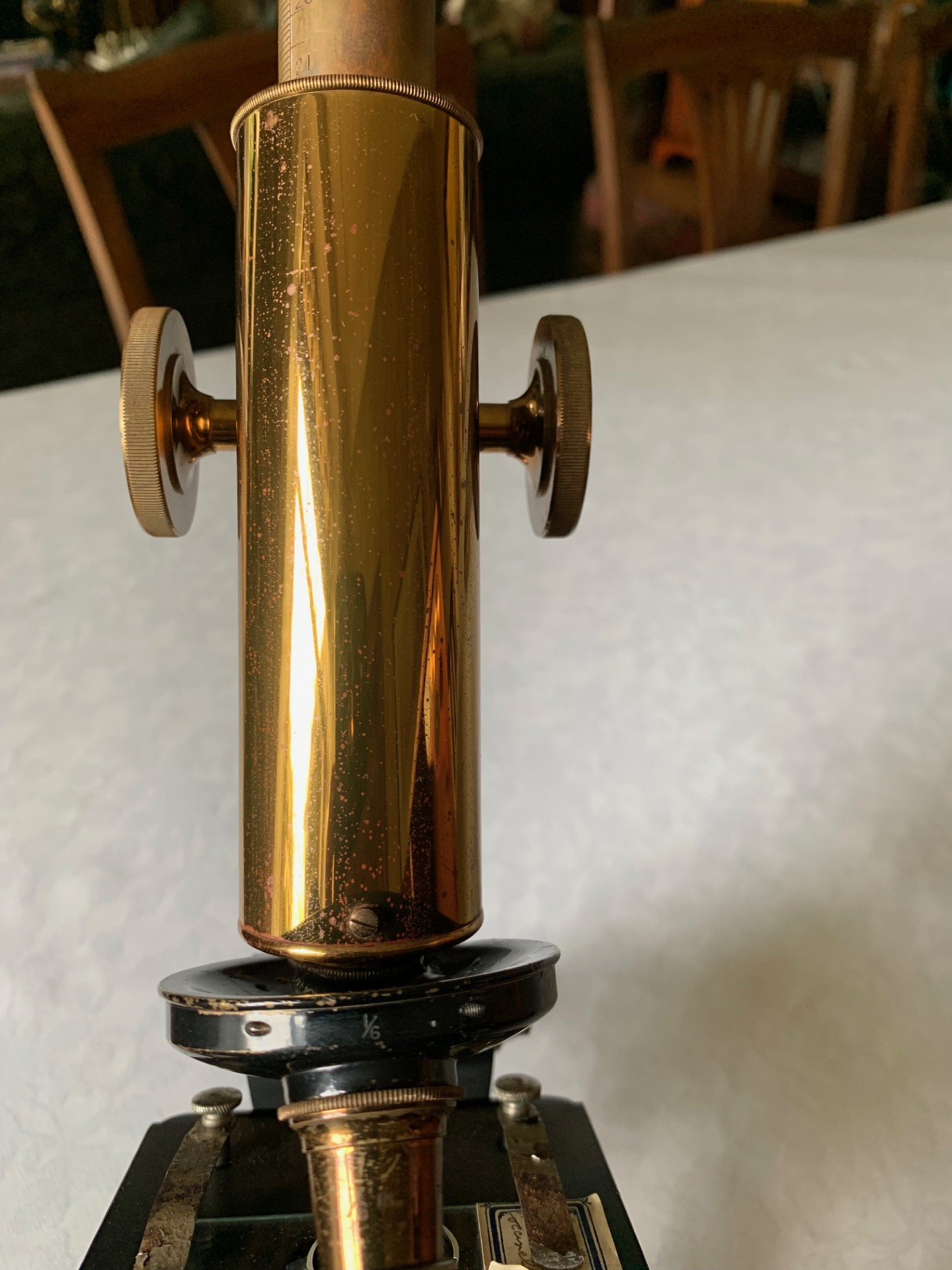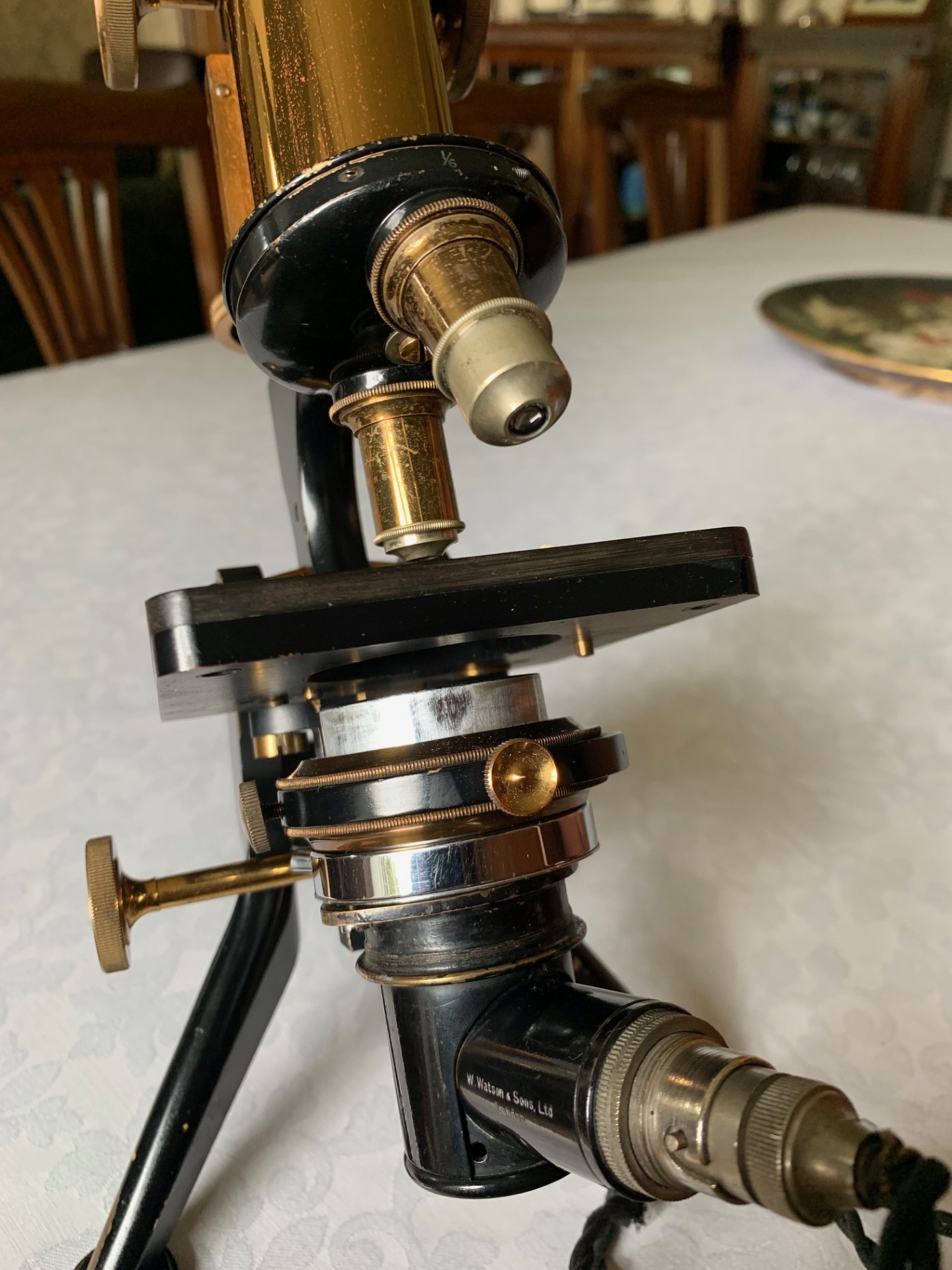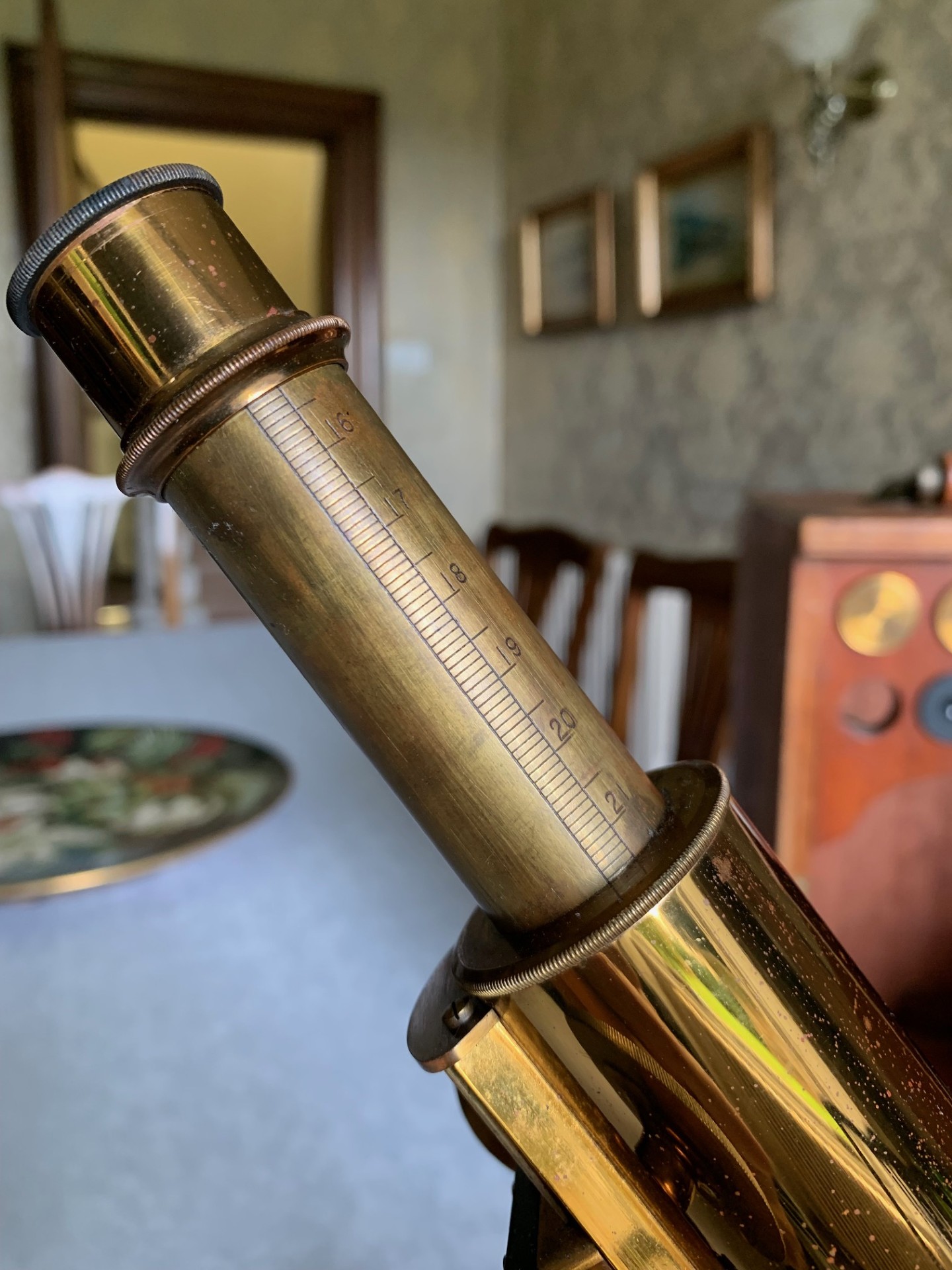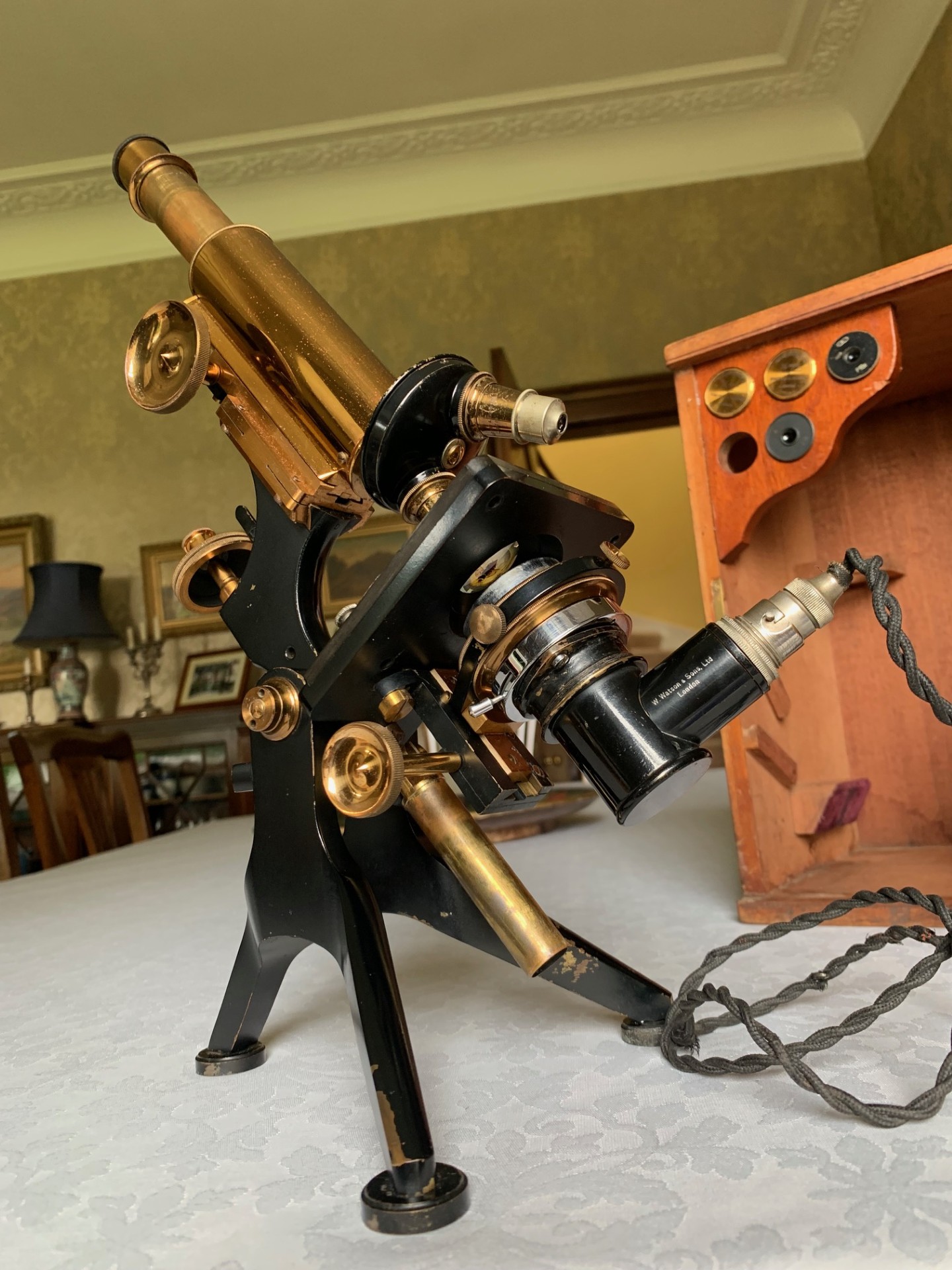SOLD – Antique Watson Edinburgh-G Brass Microscope with Electric Light – c1913, Cased
Sold
Generally very good cosmetic condition example of Watson's popular Edinburgh model. This is an Edinburgh-G model, with plain stage dating to around 1913 that's fitted with a Watson electric illuminator. It's quite rare to see this model with electric lighting.
Circa
1913
Maker
W. Watson & Sons Ltd
Country of manufacture
UK and Ireland
Description
This listing is for a decent example of Watson’s Edinburgh Student’s Stand-G model microscope in brass – it dates to 1913 based on its serial number 16691. This is a generally good cosmetic example with a few signs of wear and lacquered brass-work that’s retained its condition quite well. I hope that the listing photos do the instrument justice and showcase its visual appeal, especially with the novel electric illuminator.
The Edinburgh pattern model of microscope was produced by Watson between 1887 and around 1945; its long production run giving us a firm clue regarding just how good this model of microscope was in its heyday and over that long production cycle Watson regularly updated and improved the model, so what you see here is a mid-production example with some useful features retained from earlier iterations, such as the mirror on a swinging arm and stage bolted to the underside of the upper limb. The G-model is essentially identical to the H-model, except a plain stage us substituted for the mechanical stage found on the H-model. The Edinburgh stand was originally developed by Watson in collaboration with a professor and lecturer in bacteriology at the University of Edinburgh, hence the Edinburgh designation. With its nice lacquered brass-work, the Edinburgh model is a fine example of British optical engineering with a design and style essentially dating back to the Victorian era.
Turning to the technical details, the instrument stands on a cast brass tripod foot with twin uprights supporting the pivot, with tension adjustment and Lister-limb arrangement. The coarse focus is via rack and pinion with good smooth action that holds in position on adjustment. Fine focus is operated via a separate brass thumb-wheel located at the rear of the upper limb which operates an internal lever system acting against sprung resistance. The focusing technique being to achieve near focus with the coarse thumb-wheels, then fine-tune with the single rear thumb-wheel, which only has a fairly small range of movement via its vernier screw mechanism.
With the optics, this Watson microscope comes fitted with a period graduated chromed eyepiece draw-tube inside a brass main optical tube and there’s a good selection of eyepieces that with adequate illumination produce very good images:
– No. 2 – 6x magnification – Watson
– No. 4 – 10x magnification – Watson
– 10x magnification wide-fied by Meopta
It’s also got two period objectives and a Watson double turret in brass which rotates freely with a nice positive feel as the objectives align to the viewing position. The objectives are as follows:
– 2/3rds inch in brass – Watson – 10x magnification with correct brass canister
– 1/6th inch in brass – Watson – 40x magnification with correct brass canister
Overall therefore, the range of magnification available with this Watson ranges from about 60x with the lowest power lens combination, up to around 400x with the highest power combination.
This being an Edinburgh model-G, the instrument has a plain brass/ebonite stage with twin slide clips for holding slides steady which work well.
Turning to the sub-stage, we have a ring mount in brass on a height adjustable rack & pinion system with single-sided thumb-wheel control – also with centering via twin brass thumb-screws.
Lighting is via a bespoke Watson electric illuminator that replaces the conventional plano-concave mirror and fits into the sub-stage ring-mount. Note the mirror brass support rod is still in situ, so a mirror could be added if required. The electric illuminator is a Watson item, probably dating to the 1930s, so a later addition with fitted 6V bulb and a working iris as demonstrated. It works quite well as a light source and is powered by a modern low-voltage power supply as shown in the listing photos. This illuminator produces a warm yellow/orange light and I’ve taken a few images through the eyepiece just by balancing an iPhone on the eyepiece. The images are of an antique insect slide at different magnifications.
Accessories not shown in listing photos:
– Abbe top condenser lens that can be fitted to the electric illuminator for higher magnification work
– Additional support bracket for the electric illuminator that fits onto the mirror support rod
The instrument’s controls and friction surfaces have been very lightly lubricated and operate reasonably smoothly with a nice feel and there’s very little in the way of age-related signs of wear to all moving parts and friction surfaces. This instrument presents well with lovely gleaming brass-work showing few signs of tarnishing and spotting which is remarkable given its age at around 112 years.
There’s also the original wooden storage case with this example, with wooden/brass carry-handle, internal lens rack and working lock & key, which is always nice to have.
Owing to the weight and delicacy of this vintage Edinburgh-G microscope, it will be partially dismantled, very well wrapped for shipping and dispatched by insured courier upon receipt of cleared funds.
Thanks for looking.
Ask the Dealer
Dealer information
 Arcboutant Scientific
Arcboutant Scientific
Arcboutant Scientific based in Glasgow Scotland, with an interest in scientific collectables dating back to 1988. Now making available carefully curated fine examples, principally of antique microscopes and associated scientific equipment by quality English and Continental makers, to collectors world-wide.



